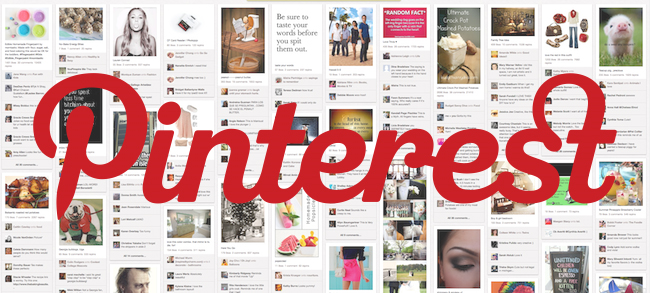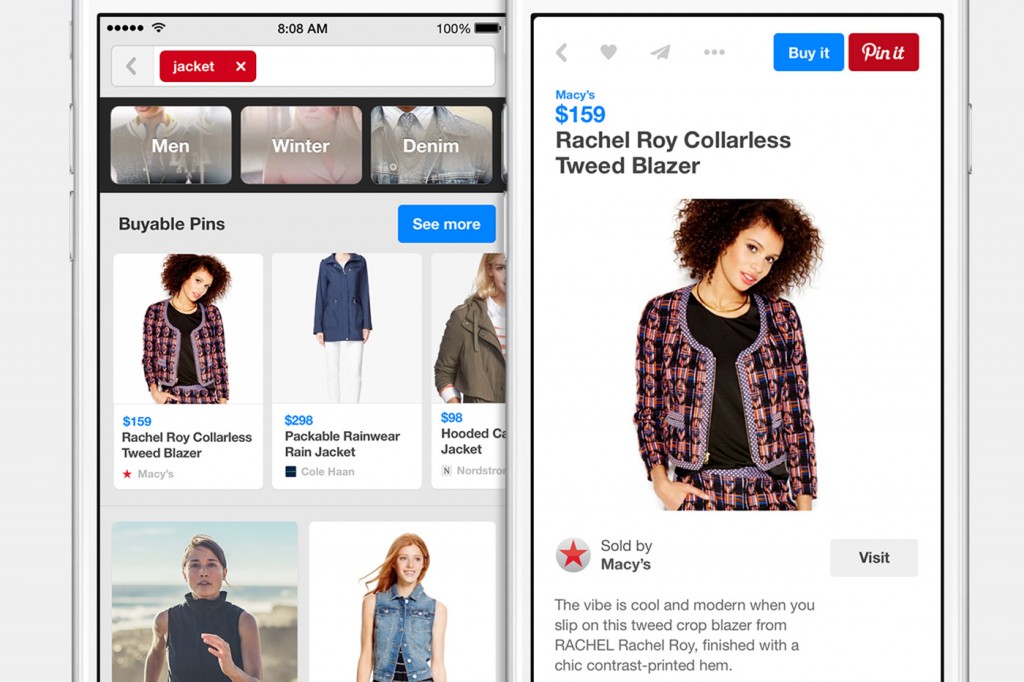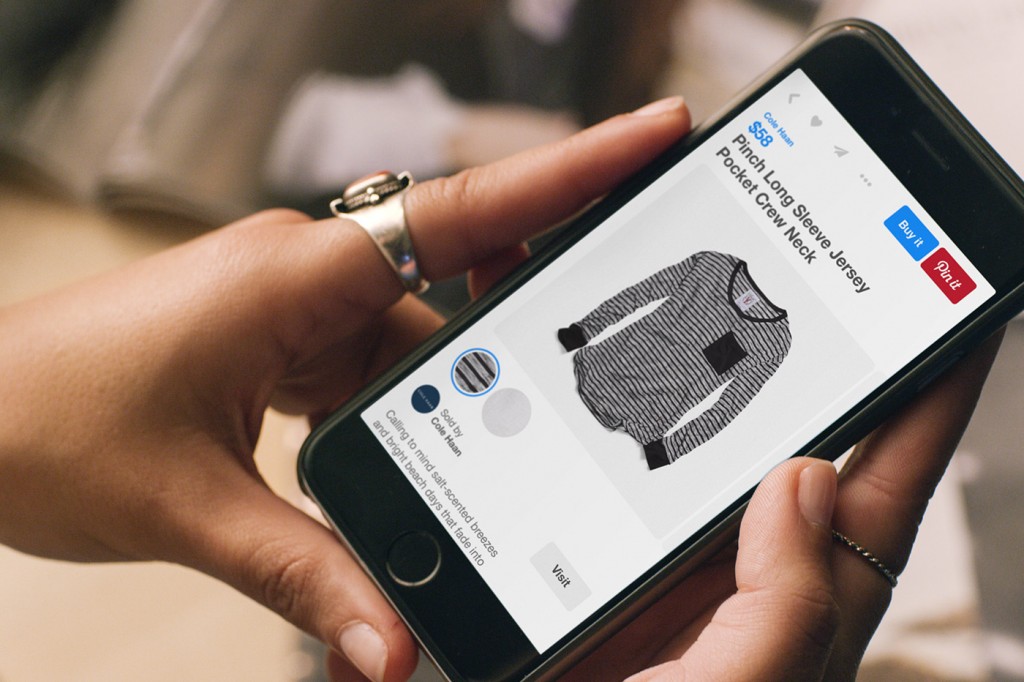Pinterest Makes a Move for Ecommerce
 eCommerce
eCommerce Pinterest focuses on user experience, generating serious amounts of traffic to a range of aesthetically pleasing pins. But with 2 million users posting product pins per day how can the social media giant capitalize on this relaxed user experience and keep visitors on the site, rather than generating a constant flow of referral traffic to sites like Shopify? Newly introduced mobile buy buttons may have the answer.
New buy-able pins now available on Pinterest, means users will be able to not only browse through an endless stream of products, but utilize a new ‘buy it’ button located right next to the ‘pin it’ button. The interesting part is that revenue will remain entirely in the hands of the store and allow users to make purchases on the site by simply providing a platform for eCommerce without capitalizing on revenue by taking a cut. It is the potential for paid promotion which has the most possibility for expansion, utilizing a similar tact to Facebook wherein users pay to create targeted advertising designed to reach a specific subset of users that is then measured in ‘Pinterest Analytics.’ The risk here is that big brands might dominate by default and the shareability of the platform might be interrupted by an endless stream of pins that have paid to be there. Will paid promotion effectively phase out small independent brands which have been the bricks and mortar of the company for a long time? The last thing this unique user base would want to see is the likes of Nike dominating a home page. Targeted advertising should provide the answer to this and giving the user the ability to ignore or remove certain ads will create a platform where only relevant ads are displayed.
93% of visitors use Pinterest to plan purchases and 96% use Pinterest to gather information about products. That means that Pinterest have created something completely unique, a no pressure browsing environment used by 73 million users per month where buying is a secondary element. By introducing that secondary eCommerce component on a platform where products have the ability to go viral with little additional spend needed, the potential for both business and financial growth is incredible. But it’s not just the potential for exposure which generates excitement for brands, the fact that the average order value for Pinterest purchases is $50 means that it is far higher than the majority of other social/commerce integrations. This means the habit for purchase is already there and by streamlining the buying process the potential for this social giant to become a one-stop-shop for everything you need could be a real possibility.
Pinterest generates 80% of its traffic through mobile, traffic that is driven through its mobile app which has led to the percentage of desktop users falling by 70% over two years to just 20%. It is for this reason that the platform has chosen to only introduce its new commerce capability to mobile devices, taking advantage of the meteoric rise of Apple Pay and PayPal’s mobile competency, creating a secure streamlined process designed to keep users on the site and continue browsing.
It seems that the future of eCommerce no longer lies in traditional platforms like Amazon, who have even tried to stay on trend with Amazon Stream, a new browsing capability designed to inspire users to save new wish lists. ECommerce now relies on a far more social aspect where sharing becomes more important that sales, an environment where unique and interesting content is king, bounce rates are lower and browsing a site is like walking down the high street to look in shop windows.
Pinterest are in a very unique position where they already have a user base, a loyal user base which is experienced with a platform designed for sharing and collating information and where the average pin is repinned eleven times. Where else could you list a product which on average is shared by eleven other people giving it the potential exposure to reach thousands?


